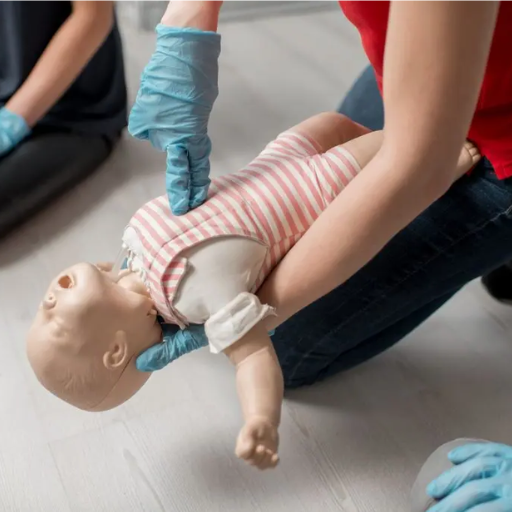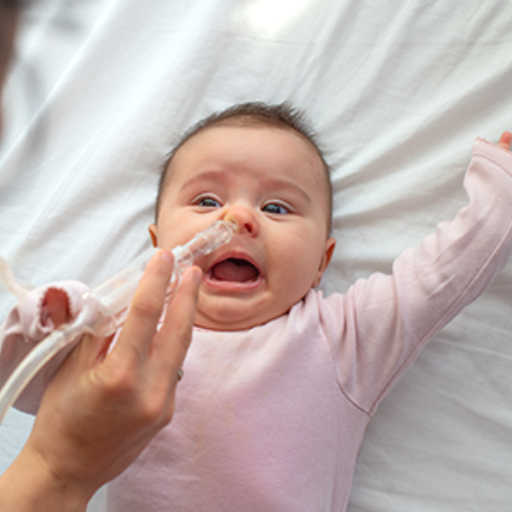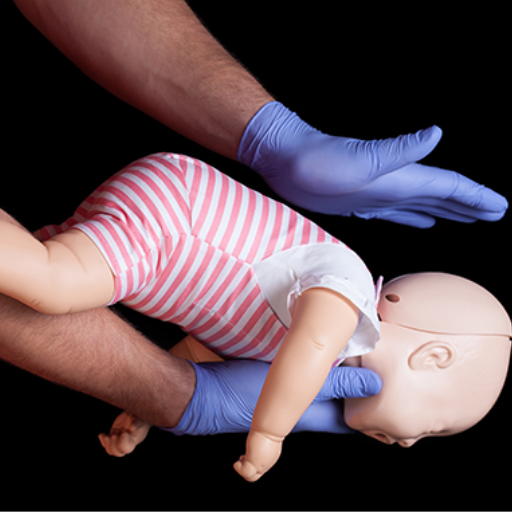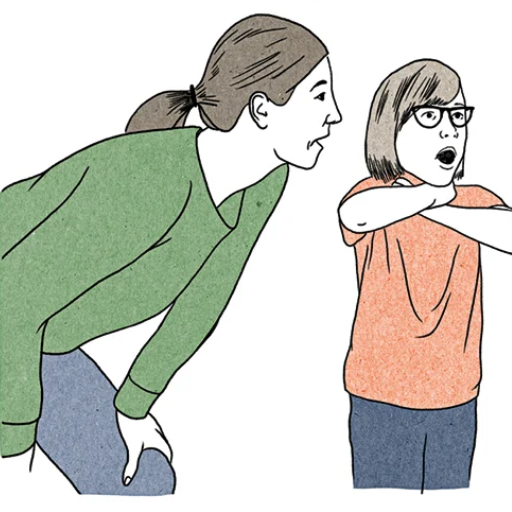
One of the most serious parenting fears is when a one-year-old is in danger of choking, and in such moments, it is vital to act accurately and quickly. Because of children's curiosity and habits at that age, where everything goes in the mouth, letting them choke is one of the worst scenarios a caregiver can face. This article will serve as a guide encompassing structured and detailed information regarding this critical situation.
The framework of this guide begins with identifying the signs of choking in an infant, distinguishing between partial and complete airway obstruction. Our focus is on infancy since the incident of choking is apparent in that specific age group. Then, we proceed with the detailed step-by-step first aid procedures, including chest thrusts and back blows. Furthermore, the article also incorporates some essential precautions to minimize the risk of choking hazards and outlines the conditions to seek medical aid. Overall, readers will find it incredible. Let's say it is straight to the point value of where and how to act in case of a child choking.
What Are the First Aid Steps If a Child is Choking?

- Assess the Situation
Ensure the child is choking and unable to cough, speak, or breathe. If the airway is partially obstructed and the child can cough forcefully, encourage them to keep coughing to dislodge the object.
- Call for Help
Alert emergency medical services immediately if the child cannot breathe or if the obstruction is not quickly resolved.
- Administer Back Blows
Position the child so that their torso is leaning forward slightly. Deliver up to five firm back blows between the child's shoulder blades using the heel of your hand.
- Perform Chest Thrusts (for Infants)
If the choking child is under one year of age, position them face-down across your forearm, supporting their head. After the back blows, turn the infant over and use two fingers to press on the center of the chest just below the nipple line, performing up to five chest thrusts.
- Perform Abdominal Thrusts (for Older Children)
If back blows fail for children over one year old, position yourself behind the child, wrap your arms around their waist, and make a fist just above their navel. Grasp your fist with your other hand and provide quick, upward abdominal thrusts. Repeat up to five times.
- Repeat the Steps as Needed
Alternate between five back blows and five abdominal or chest thrusts until the object is dislodged or the child begins to breathe or cough independently.
- Provide CPR if Necessary
If the child becomes unresponsive, lay them on a flat surface and begin CPR, ensuring that emergency services are on the way.
Following these steps promptly and effectively can significantly improve the chances of saving a choking child.
How to Perform Back Blows on a Choking Child
The third technique was Back slaps; before starting the Back slap, the child would lean forward and be told to remain that way as the force of gravity would help remove the blockage. To support the child's chest, one of my hands would be placed on the child’s chest, and with the palm of my hand, the child’s back would be slapped five times with the other hand between the shoulders. Each slap would be strategic and powerful in producing an effect that would dislodge the obstruction and reduce injury. During this step, the main aim would be to keep the head and observe if it displaces the obstruction or judge if further action, like thrusting the chest or the abdomen, is warranted.
When to Use Chest Thrusts Instead of Abdominal Thrusts
In some situations, abdominal thrusts may be unsafe, but chest thrusts are recommended. Pregnant women, obese persons, and infants under one-year-old are a few such instances. However, in choking cases, when a pregnant woman, an infant under the age of one, or an obese person is involved, modification is required to accommodate. Chest thrusts are a better option as they help get the obstructing enemy out of the chest, thus increasing air pressure while minimizing the injury caused.
First, position yourself behind the individual. Then, place your fist at the midpoint of the individual’s chest just below the breastbone. This means that lower ribs are protected. Once you have done that, the other hand will wrap around the first hand, and the endover will be there. Get arms crossed, then forward and smack the spine inwards. Then, repeat until the choking motion has ceased.
Abdominal and chest thrusts will be used on their effectiveness and the specific needs of the individual in an emergency. Determine the particular scenario and rely on the suitable technique for the person suffering.
How to Dislodge an Object from a 1-Year-Old's Airway
To help a 1-year-old get an object out of its airway, I would do a combination of back blows and chest thrusts. Make sure that these techniques are helpful and safe in the case of infants who are less than one year old. As a first step, I made sure that the infant was face down across my forearm, with the head pitched lower to the chest. Then, using the heel of my hand, I was to give up to five back blows between the shoulders of the infant. Should this not be successful, I could then turn the infant over onto its back and proceed to give him chest thrusts. This would involve me placing two fingers just below the line of the nipple and thrusting five or fewer times to up to five times. The idea should be to avoid excessive pressure around the thrusting area, but the exertion should be able to penetrate as much as 1.5 inches or 4 cm.
If the obstruction persists, I alternate my techniques and assess the infant's response to the efforts. It is essential to mention here that too much force is not required, and blind finger swipes should not be attempted as they can push the object further back into the airway. Moreover, I will contact the authorities immediately if the obstruction is not relieved in the short run.
What Are Common Choking Hazards for a Choking Infant?

Infants are most vulnerable to choking on small, hard, slippery, or rounded foods, as well as some toys, buttons, coins, or balloons, which can be a great hassle if not taken care of. While offering an infant food, supervision is essential to monitor what the baby puts in his mouth. Toys usually come with detachable parts, which can be a significant threat even if the baby bites.
Identifying Choking Hazards in the Home
I examine the areas where my infant eats and plays, as they are protected from choking hazards such as balloons, toys, buttons, or coins. Picking up small pieces of food and serving them to the infant helps eliminate the risk of choking, such as grapes, popcorn or hard candy. Looking under tables or on the floor for dropped food helps eliminate risk because complications arise from even a tiny piece of food or a broken balloon. Adopting a new habit of checking for choking hazards will help the infants be in a safe environment.
Foods to Avoid for an Infant Under 1 Year
When deciding on which food not to feed my child for less than one year, I always try to consider the potential health and safety hazards of the ingredients. Apart from this risk, I also steer clear of cow’s milk as it already lacks numerous key nutrients, but I am against giving infants honey as it does carry the risk of infant botulism. I also do not use added sugars and heavily salted foods to safeguard their developing kidneys and unhealthy eating patterns. Other choking-hazard foods, including whole grapes, raw nuts, vegetables, and meat or cheese, can only be offered when pureed and cut into small pieces; otherwise, I do not allow such foods.
Some examples of these unpasteurized products include dairy products and fruit juice. Without proper sterilization, these products can easily get contaminated with dangerous microbes like E. Coli or Listeria Monocytogenes, leading to serious health complications. Regarding fish, I also try to avoid swordfish and king mackerel because they are known to be high in mercury and have a much greater risk of tuna toxicity. Finally, I do not feed the love for preservatives because they are processed foods packed with artificial additives, and I stay away from these. My guidelines are simple enough to be safe for the child’s consumption and significant growth and development.
How Can First Aid Skills Help in a Choking Emergency?

The process of giving first aid to a person who is choking becomes more effective when a caregiver who has been trained in first aid skills’ attends to the victim of choking. One such technique is back blows and abdominal thrusts (commonly known as the Heimlich maneuver), which can allow the sustaining person to breathe again. Gentle back slaps and chest compressions can be used on infants so that the obstructing object can be removed using these methods without causing damage to the infant. An appropriate level of first aid instruction guarantees that the procedures are done safely and enables a potentially life-saving act during crucial times.
Learning First Aid for Choking Situations
When one embarks on a journey to learn first aid for choking or any other medical emergency, it has been essential for me to feel prepared and capable of rendering assistance in such situations. I’ve understood how to recognize a person is choking, which is presumably the most common thing to ignore - not being able to speak or breathe and we’ve learned this – every second is a matter of being pulled into a panic mode, so I am ready to perform the required maneuvers. In many conscious adults, I can try back blows and abdominal thrusts. At the same time, in the case of infants, I utilize back and chest slapping, whether intentionally, for relief without any injury. Learning these methods has boosted my moral standard of self-satisfaction, that I'll be able to make a difference in these life-threatening situations because time is of the essence, and we all want to save lives.
Using a First Aid App for Quick Guidance
Employing first aid apps is good as they provide reliable information sources in emergencies. Some applications offer visual instructions and video clips to demonstrate the proper technique. For example, the apps offer instructions on giving back blows and abdominal thrusts to adults and back slaps and chest compressions to infants, depending on the case scenario. Local parameters that I always emphasize in a first aid app include offline functionality, intuitiveness of the interface, and an instruction set to be evidence-based, such as the ones provided by the American Heart Association or Red Cross. Further, the presence of constant voice guidance, together with swift resolution of usability issues, also increases the functionality in critical conditions.
What Should You Do If Help Arrives Late?

When help arrives late, staying calm and providing first aid according to the situation is essential. For example, in the case of CPR, keep administering chest compressions at Michaluk’s recommended depth and rate until the professionals arrive. If you control bleeding, apply a clean cloth or a bandage and press down firmly over the wound to provide constant pressure. In the meantime, the patient‘s condition can be assessed from time to time by checking if he is breathing or has a pulse and informing the emergency responders of any changes to the arrival of the emergency responders. Your activities in such circumstances can be crucial for the victim since this helps him stabilize and delays him to receive advanced care.
When to Shout for Help and Call Emergency Services
It is essential to assess the situation quickly in an emergency environment and determine whether emergency services are needed. Shout for help and call These emergency responders right away when you see things like these:
- Victim Not Responding—If the victim fails to respond to verbal or physical contact calls, one should call the emergency services directly. Try tapping the person and shouting, “Are you okay?” to get a response. Then, confirm by calling emergency services.
- Breathing Gaspingly Or Breathing Not At All—If the victim is not exhaling air or there are irregular cracks in their breathing, such as gasping, call for help and start giving CPR. If applying chest compressions to males or females of age above adulthood, try to achieve a depth rate from 2 inches up to 2.4 inches alongside 100-120 compressions in a minute.
- When a Heart Attack or Stroke Strikes: In the case where the person has a sudden stroke or heart attack and they have visible scars or bleeding, contact the emergency services and apply pressure on the scarred area.
- Bodily Traumas or Severe Bleeding: When a person feels unbearable pain in their chest, has trouble breathing, or suddenly feels weak, contact emergency service professionals immediately. Time is the deciding factor; the earlier the response, the safer the outcome.
When you call the emergency services, ensure that you give them important details like the victim's status, the site of the incident, and what other first aid was performed. This is mainly to help the responders prepare adequately for the scene after arriving.
Steps to Take Until Help Arrives
Ensuring there is no further risk of harming the life or the limit of any injury, is what I focus on while waiting for the relevant outside help, this approach of mine is very effective. I try to keep the victim calm and discourage his unnecessary movement; I do this only if he is conscious. I begin to check and ensure the unclogged airway, normal breathing, and adequate circulation (ABCs) for pulse, also if the victim is unconscious and during my medical examination if he does not respond and is not breathing, then I give him CPR. I try to observe their condition for any change while remaining by their side so that they feel secure until medical help comes.
How Does the Red Cross Advise Handling a Choking Child?

Begin by asking If the child can cough, followed by the child’s valuation. If the child seems not able to cough, breathe, or talk to you, flip her or him over and try to administer back blows and thrusts for children over one-year-old, striking five times between the shoulder blades with the palm proceeds with the Heimlich maneuver, where five abdominal thrusts are performed. For children below the age of one year, do not simply substitute the procedure from what was stated earlier; be gentle and try five chest thrusts followed by back blows. While performing this try to look out if the object in danger has been pushed out, if not repeat the cycle. If the dire circumstances do not change, inform the emergency services for help.
Guidelines from the American Red Cross for First Aid
The American Red Cross is blunt about applying first-aid: it must be done quickly and without hesitation. The answers to the questions below and the technical parameters given are brief in scope:
- How do you assist a child in case he or she is choking?
- First, ensure the child cannot cough, talk, or breathe effectively.
- The age of the child has to be taken into consideration when applying the techniques:
- Children more than one year:
- Five sharp pats on the back between the shoulder blades with the palm heel are needed; this will be followed by five upward and inward thrusts to the abdomen between the navel and ribs, which are intended to perform the Heimlich maneuver.
- Children less than a year:
- Before proceeding, give five gentle pats on the infant’s back with his or her head lower than the chest. This will be followed by five chest thrusts using two fingers below the nipple, with each thrust compressing the chest by about one point five inches.
- What should be done if the obstruction is not cleared using the above techniques?
- Call for backup or ask others to call for help, but if the child does not respond, start by applying CPR techniques.
- Start by understanding C.P.R. interference and comprehending how pressure can/needs to be exerted on the infant's chest. A depth of at least one and a half inches to two inches has been recommended, and the thrusts are to be made between one hundred and twenty thrusts a minute.
- After performing chest compressions, look in the mouth and try to take some breaths. If unsuccessful, repeat the process while confirming that someone has called for help.
These protocols conform to defined first aid regulations whereby the victim is resuscitated through blood circulation and oxygen supply until a trained medical team is reached.
Differences Between American and British Red Cross Techniques
Although the American and British Red Cross aims for the same goal of saving lives and serving humanity, their methods differ significantly due to varying country policies, cultures, and how training is addressed. One significant difference is the approach regarding CPR. The American Red Cross subscribes to AHA recommendations, which include administering 30 chest compressions and two rescue breaths in adults. The British Red Cross does similar resuscitative ratios but emphasizes adding campaigns for hands-on CPR in support of the wider European Resuscitation Council community.
There is also a difference at the training level. For instance, the ARC focuses more on hurricane management, a disaster likely to occur in their region, while the BRC focuses on regional scenarios such as flooding and outbreaks. There is also a slight difference in the way mental health interventions are approached; BRC, for instance, endorses the use of psychological first aid as part of the intervention. Both organizations practice using scientific approaches, but they suit the needs of regional communities in their own ways.
References
Choking Abdominal thrusts Cardiopulmonary resuscitationFrequently Asked Questions (FAQ)
Q: What should I do first if a baby is choking?
A: If a baby is choking, the first step is to assess whether it can cry or cough. If not, immediately call 911 for emergency assistance and begin first aid steps for the child.Q: How do I perform back blows on a choking infant?
A: Lay your baby face down along your thigh, supporting their head. Give up to 5 back blows between the shoulder blades using the heel of your hand.Q: What should I do if the object does not come out after back blows?
A: If the object does not come out, turn the baby face up and use two fingers to give up to 5 chest thrusts in the middle of the chest just below the nipple line. Repeat the cycle of back blows and chest thrusts.Q: Can I remove the object from the child's mouth?
A: Only try to remove the object if you can see the object in the child's mouth. Do not blindly sweep the mouth with your finger, as it might push the object further down.Q: When should I call 911 for help?
A: Call 911 immediately if the baby is choking and cannot cough, cry, or breathe. Continue with first aid steps while waiting for emergency help.Q: How can I prevent my child from choking in the future?
A: To prevent choking, keep small objects out of reach, supervise meals, and cut food into small, manageable pieces appropriate for children under 1.Q: What are the signs that a baby is choking?
A: Signs that a baby is choking include difficulty breathing, coughing, gagging, or a high-pitched sound when they breathe. The child might also become silent and unable to cry.Q: If I have a baby, is it necessary to learn first aid and CPR?
A: Learning first aid and CPR is highly recommended for parents and caregivers. It equips you with the knowledge to help an infant in emergencies effectively.Q: Can I ask my child questions about first aid?
A: While a child under age one may not understand, teaching older children basic first aid can increase their safety awareness.Q: What should I do if my daughter started choking during a meal?
A: If your daughter starts choking, remain calm, call 911 if necessary, and follow the first aid advice for a baby by applying back blows and chest thrusts as needed.







 Login with Google
Login with Google Login with Facebook
Login with Facebook